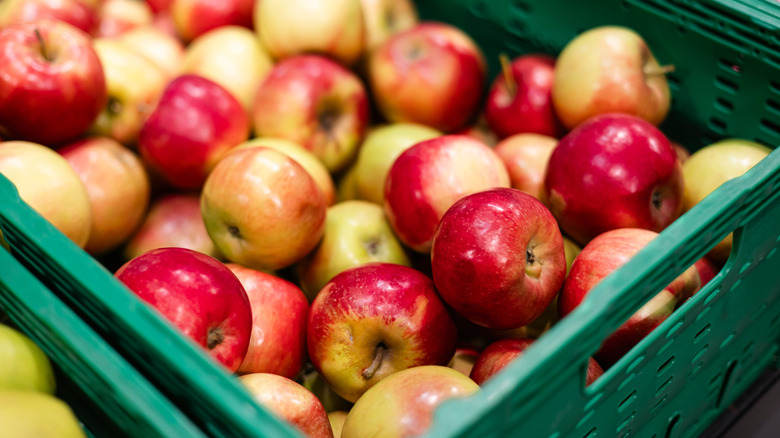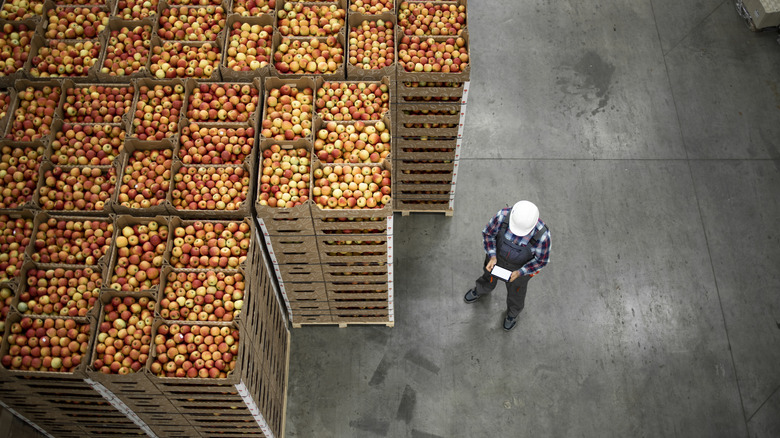Why The 'Fresh' Apples In Grocery Stores May Not Be As Fresh As You Think
Apple harvest season only comes once a year during the fall, so why is it that you can get apples year-round? Of course, apples are imported from countries like Chile or France when not in season in the U.S. — but still, you'll notice a "Grown in Washington" sticker on a Granny Smith apple in the middle of spring. This doesn't mean there are apple varieties with different harvest times. Produce has a storage secret that allows apples to stay good for up to a year.
While traditional cold storage, like standard refrigeration, seems like the logical way to store apples for longer, it takes a slightly more complex method to keep them good for up to a year. First commercialized in the 1950s, controlled atmosphere storage became the long-term solution. This not only takes into account the air temperature but also the humidity, oxygen, and carbon dioxide levels of the storage room.
An apple that has been harvested and kept at room temperature will start to degrade after about a week. Traditional cold storage can extend the shelf life by several weeks to a few months. By controlling all gas composition, humidity, and temperature, apples can be preserved for several months to up to a year. When you shop for apples at the grocery store, and it's not apple season, these may have been pulled from controlled atmosphere storage recently. Aside from apples, this method is also used for pears, grapes, peaches, and other produce.
The science behind using controlled atmosphere storage for apples
Scientists discovered that apples continue to respire after harvest, meaning that they take in oxygen and release carbon dioxide. They also release ethylene, which ripens the fruit. The more time they respire and release ethylene, the riper they get. However, after a week or so without proper storage, they will begin to deteriorate. So, the idea behind controlled atmosphere storage is to minimize the respiration to keep apples crisp.
A cold environment is important for this process. Typically, the temperature is dropped to 32 to 57 degrees Fahrenheit to limit ethylene production and also delay microbial development. Air normally contains around 21% oxygen, but controlled atmosphere rooms are as low as 1%. Carbon dioxide levels are also increased. Since apples aren't breathing in much oxygen, this limits ethylene production and decreases ripening and degradation. Humidity is also key to preventing moisture loss and guarantees the firm, crunchy texture we love in apples. Modern facilities use sensors and computers to continuously monitor gas composition and can make adjustments in an instant, depending on harvest size or apple variety, with some varieties requiring different gas compositions and temperatures.
Controlled atmosphere storage doesn't exactly improve apples; it simply preserves the texture and firmness from the moment it was picked. The one downside is that this long-term storage solution can reduce or modify some of the apple's flavor or aroma.

